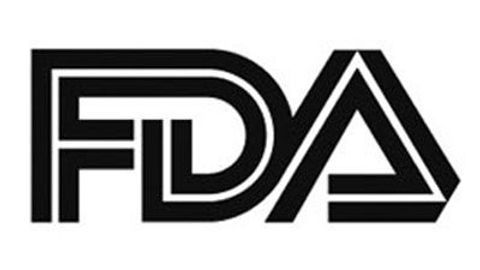FDA Grants Priority Review to BLA of Elranatamab for R/R Multiple Myeloma
Results from cohort A of the MagnetisMM–3 trial of erlanatamab for patients with relapsed/refractory multiple myeloma have led the FDA to grant priority review to a biologics license application for the agent in this patient population.

The FDA has granted priority review for the biologics license application for elranatamab, an investigational B-cell maturation antigen (BCMA) CD3-targeted bispecific antibody, for patients with relapsed/refractory multiple myeloma (RRMM).
The BLA was based on encouraging results from cohort A (n = 123) of the MagnetisMM-3 trial (NCT04649359) which showed that treatment with elranatamab with a median follow up of 10.4 months led to an objective response rate (ORR) by blinded independent central review (BICR) of 61.0% (95% CI, 51.8%-69.6%) for patients with penta- or triple-class refractory multiple myeloma and who received elranatamab as their first BCMA-targeted therapy.2
A total of 55.3% of patients treated with elranatamab had a very good partial response or better and 27.6% of patients achieved a complete remission or better. Among patients who achieved a complete remission (n = 22), 90.9% achieved minimal residual disease (MRD)-negativity at a threshold of 10-5, and the median time to response was 1.2 months.
Although the median progression-free surivval (PFS) and overall survival (OS) was not achieved, PFS rates at 6- and 12-months were 65.2% and 58.8% with the agent, respectively. Additionally, the OS rate with elranatamab at 6 months was 76.1% and at 12 months was 63.6%.1
Additionally, these findings suggest that elranatamab has a manageable safety profile as the 2-step-up priming dose regimen of 12/32 mg helped mitigate the rate and severity of cytokine release syndrome (CRS) and immune effector cell-associated neurotoxicity syndrome (ICANS) among patients in cohort A treated with this priming regimen.
Cases of CRS were exclusively grade 1 or 2 and most cases were observed after the first (43%) or second (24%) dose. Only 6% of patients reported CRS after dose 3 and fewer than 1% experienced CRS after dose 4. Then, 3% of patients reported having ICANS that was grade 1/2 only, and no fatal neurotoxicity events were seen.
"Today, multiple myeloma is a fatal hematologic malignancy, with a median survival of just over five years. As an off-the-shelf treatment, BCMA bispecific antibodies are heralding a new treatment paradigm that can greatly impact the lives of people with this disease.” said Chris Boshoff, MD, PhD, chief development officer, Oncology and Rare Disease, Pfizer Global Product Development, in the press release. “We believe that elranatamab, if approved, has the potential to become the next standard of care for multiple myeloma given its favorable clinical results and convenient subcutaneous route of administration. We look forward to working with the FDA and EMA to bring this new innovative medicine to patients globally.”
MagnetisMM-3 is an ongoing, open-label, multicenter, single-arm, phase 2 study where investigators are assessing the safety and efficacy of elranatamab alone in patients with RRMM. Patients eligible for enrollment represent a heavily pretreated population and have had previously received at least 3 classes of therapies, including a proteasome inhibitor, an immunomodulatory agent, and an anti-CD38 monoclonal antibody.2
In cohort A of the MagnetisMM-3 study, 123 patients with multiple myeloma who were refractory to at least 1 proteasome inhibitor, 1 immunomodulatory drug, and 1 anti-CD38 antibody were evaluated. Those enrolled had received a median of 5.0 prior therapies (range, 2-22). A majority of patients were triple-class refractory (96.7%) and nearly half were penta-class refractory (42.3%).1
Patients received elranatamab step-up subcutaneous dosing which consisted of elranatamab at 12 mg on day 1 followed by 32 mg on day 4 in the first week of treatment to mitigate adverse events. After the first week, patients were administered elranatamab subcutaneously once per week at 76 mg. The step-up dosing began later in the study and included 119 of the 123 patients.
Among those enrolled, the median age was 68 years (range, 36-89), ECOG performance scores of 0 were seen in 36.6% of patients, 1 in 57.7%, and 2 in 5.7%. Most patients were male (55.3%) and White (58.5%). A quarter of patients had high-risk cytogenetics (25.2%) and almost one-third had extramedullary disease (31.7%). Further, 15.4% of patients had stage III disease per the revised Multiple Myeloma International Staging System, while the rest had stage I (22.8%), II (55.3%), or unknown (6.5%).
Previously in November 2022, the FDA granted elranatamab a breakthrough therapy designation. A decision from the FDA on the application is expected in 2023. Additionally, the European Medicines Agency also accepted elranatamab’s marketing authorization application.
REFERENCES:
Pfizer’s elranatamab receives FDA and EMA filing acceptance. News release. Pfizer Inc. February 22, 2023. Accessed February 22, 2023.
Bahlis NJ, Tomasson MH, Mohty M, et al. Efficacy and safety of elranatamab in patients with relapsed/refractory multiple myeloma naïve to B-cell maturation antigen (BCMA)-directed therapies: Results from cohort A of the magnetismm-3 Study. Blood. 2022;140(suppl 1):391-393. doi:10.1182/blood-2022-162440
Gasparetto Explains Rationale for Quadruplet Front Line in Transplant-Ineligible Myeloma
February 22nd 2025In a Community Case Forum in partnership with the North Carolina Oncology Association, Cristina Gasparetto, MD, discussed the CEPHEUS, IMROZ, and BENEFIT trials of treatment for transplant-ineligible newly diagnosed multiple myeloma.
Read More